Accepted Scientific Name: Mammillaria melaleuca Karw. ex Salm-Dyck
Cact. Hort. Dyck. (1849) ed. II. 108. 1850
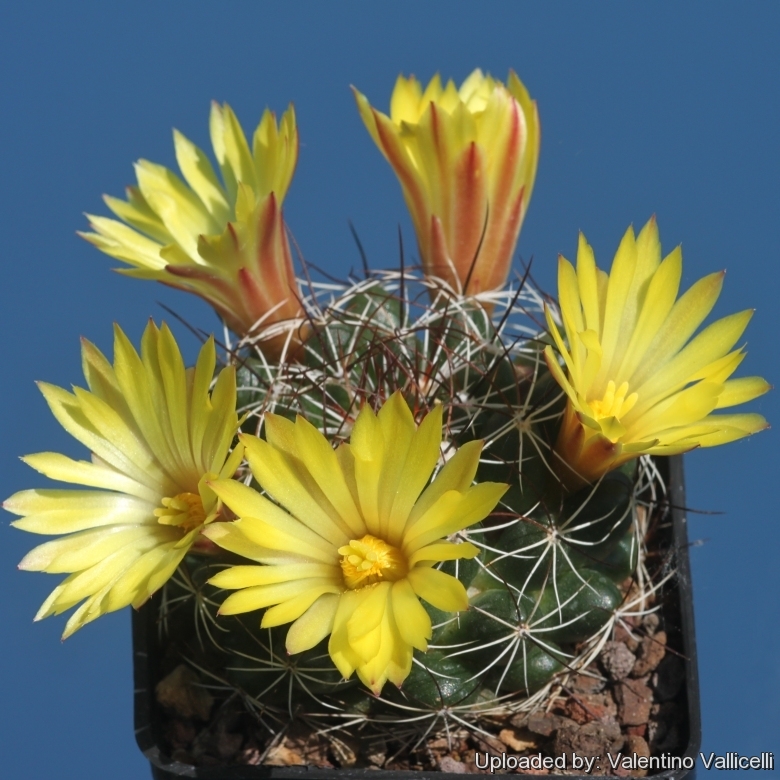
Cactus melaleucus (Mammillaria melaleuca) Photo by: Valentino Vallicelli
Origin and Habitat: Tamaulipas and central Mexico(Northern America).
Altitude: 1300-2000 metres above sea level.
Type locality: Palmillas, Tamaulipas
Synonyms:
Description: Mammillaria melaleucaSN|15699]]SN|15699]] (Syn: Dolichnthele melaleuca ) is a low-growing cactus with large, bright yellow flowers. The most obvious characteristic for associating it with Dolichothele are the prominent tubercles and the comparatively larger yellow flowers than those of the average.
Habit: The plants in habitat stay solitary for a long time and clusters only after several years if at all. In cultivation it clusters readily forming large mounds in a few year.
Root: Taproot, merging with stem forming a stout tuberous rootstock.
Stems: Globose, about 10 cm hight, bright-green, without milky sap.
Tubercles: Prominent, quite firm, ovate obtuse up to 5 cm long, rounded apically, somewhat glaucous, without latex, axils naked.
Areoles: With white hairs when young, in age naked.
Central spine: One solitary, occasionally up to 3, porrect, needle-like, slender, similar to the radials but usually darker, purplish brown, with a blackish tip.
Radial spines: 6-12 widely spreading, acicular, nearly straight, stiff but not rigid, approx. 2,5 mm long, the 4 upper ones often longer, white to pale yellow, swollen and darker at base and slightly puberulent when young, lower ones white.
Flowers: Funnelform, citron-yellow, sweetly scented, 3-4(-6) cm long and in diameter at anthesis. Tepals few, fused at the base, yellow with red tips and pinkish-red stripes on the backside.
Blooming season: Spring.
Fruits: Oblong green to greenish brown partly reddish.
Seeds: Blackish brown.
Bibliography: Major references and further lectures
1) Robert T. Craig “The Mammillaria handbook: with descriptions, illustrations, and key to the species of the genus Mammillaria of the Cactaceae” E P Publishing, 1945
2) John Pilbeam “Mammillaria The Cactus File Handbook” Cirio Pub. Services, 01/Dec/1999
3) Edward Anderson “The Cactus family” Timber Press, Incorporated, 2001
4) James Cullen, Sabina G. Knees, H. Suzanne Cubey "The European Garden Flora Flowering Plants: A Manual for the Identification of Plants Cultivated in Europe, Both Out-of-Doors and Under Glass" Cambridge University Press, 11/Aug/2011
5) David R Hunt; Nigel P Taylor; Graham Charles; International Cactaceae Systematics Group. "The New Cactus Lexicon" dh books, 2006
6) Clive Innes, Charles Glass “Cacti” Portland House, 01/May/1991
7) N. L. Britton, J. N. Rose “The Cactaceae. Descriptions and Illustrations of Plants of the Cactus Family.” Volume 4, The Carnegie Institution of Washington, Washington 1923
8) Curt Backeberg “Die Cactaceae: Handbuch der Kakteenkunde” Gustav Fischer Verlag, Stuttgart New York 1982–1985
9) Ulises Guzmán, Salvador Arias, Patricia Dávila: "Catálogo de cactáceas mexicanas." Universidad Nacional Autónoma de México, Mexiko-State 2003, ISBN 970-9000-20-9
 Cactus melaleucus (Mammillaria melaleuca) Photo by: Valentino Vallicelli
Cactus melaleucus (Mammillaria melaleuca) Photo by: Valentino Vallicelli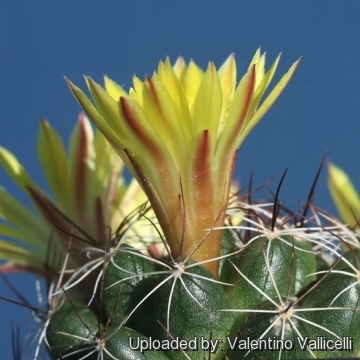 Cactus melaleucus (Mammillaria melaleuca) Photo by: Valentino Vallicelli
Cactus melaleucus (Mammillaria melaleuca) Photo by: Valentino Vallicelli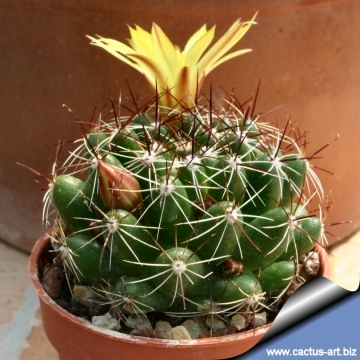 Cactus melaleucus (Mammillaria melaleuca) Photo by: Cactus Art
Cactus melaleucus (Mammillaria melaleuca) Photo by: Cactus Art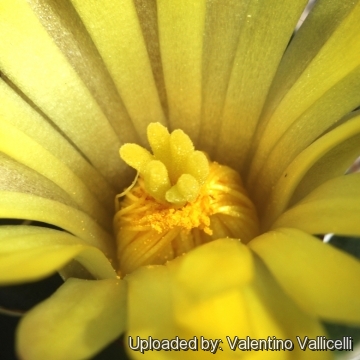 Cactus melaleucus (Mammillaria melaleuca) Photo by: Valentino Vallicelli
Cactus melaleucus (Mammillaria melaleuca) Photo by: Valentino Vallicelli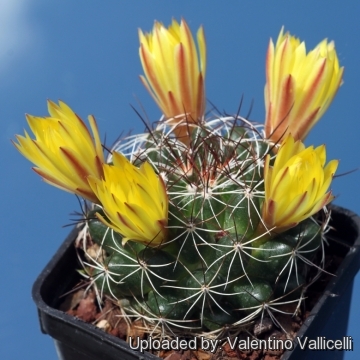 Cactus melaleucus (Mammillaria melaleuca) Photo by: Valentino Vallicelli
Cactus melaleucus (Mammillaria melaleuca) Photo by: Valentino Vallicelli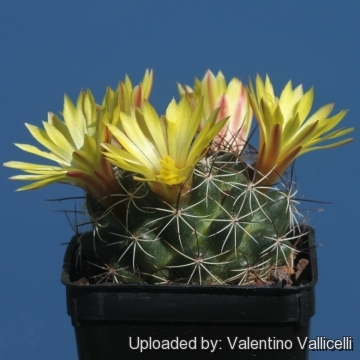 Cactus melaleucus (Mammillaria melaleuca) Photo by: Valentino Vallicelli
Cactus melaleucus (Mammillaria melaleuca) Photo by: Valentino Vallicelli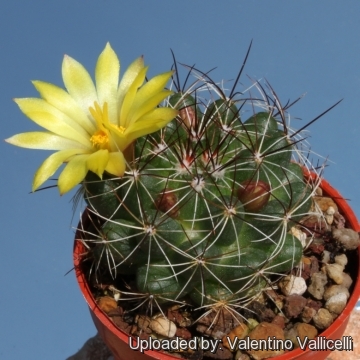 Cactus melaleucus (Mammillaria melaleuca) Photo by: Valentino Vallicelli
Cactus melaleucus (Mammillaria melaleuca) Photo by: Valentino Vallicelli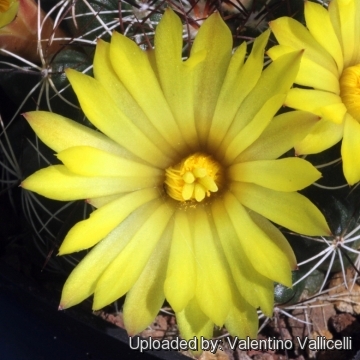 Cactus melaleucus (Mammillaria melaleuca) Photo by: Valentino Vallicelli
Cactus melaleucus (Mammillaria melaleuca) Photo by: Valentino VallicelliCultivation and Propagation: Mammillaria melaleucaSN|9068]]SN|15699]] is an easy plant, recommended for any collection that needs lots of light with ample airflow.
Growth rate: Fairly slow growing, but will produce clumps in several years. Stays neat in appearance as it offsets, with none of the irregularities associated with some other members of the Subgenus Dolichothele. it can fill a 25 cm pot given the best conditions.
Soils: It likes very porous standard cactus mix soil with little organic matter (peat, humus). This species benefits from a more open potting mix than its near relatives such as Mammillaria decipiensSN|15699]]SN|9068]].
Repotting: Repotting every 2-3 years. It will need a pot with sufficient depth to allow the tap root. As it is especially prone to rot under-pot in a smaller container filled with very porous compost. Use pot with good drainage.
Watering: Water regularly in summer, but do not overwater (very wet-sensitively, especially in light of its succulent root system). Its roots are easily lost in pots that stay damp for any length of time. Keep dry with ample airflow in winter. In the rest period no high atmospheric humidity!! Care must be taken with watering as they tends to become swollen and untidy in growth habit if given too much water and shade.
Fertilization: During the growing season enrich the soil using a fertilizer rich in potassium and phosphorous, but poor in nitrogen, because this chemical element doesn’t help the development of succulent plants, making them too soft and full of water.
Hardiness: Reputedly sensitive to frost , but less so if kept on the dry side prior to, and during, cold weather (hardy to -5° C for short periods). However some warmth throughout the year will increase the grower's success (minimum 5° to 8°C during rest season).
Exposition: Outside bright sun, filtered sunlight or afternoon shade, inside it needs bright light, and some direct sun. Subject to sunburn if exposed to direct sun for too long. Tends to bronze in strong light, which encourages flowering and heavy wool and spine production.
Uses: It is an excellent plant for container growing. It always looks good and stays small. It look fine in a cold greenhouse and frame.
Pests & diseases: It may be attractive to a variety of insects, but plants in good condition should be nearly pest-free, particularly if they are grown in a mineral potting-mix, with good exposure and ventilation. Nonetheless, there are several pests to watch for:
- Red spiders: Sensitive to red spider mite. Overhead watering is helpful in controlling mites.
- Mealy bugs: Occasionally mealy bugs they develop aerial into the new growth among the wool with disfiguring results, but the worst types develop underground on the roots and are invisible except by their effects.
- Scales: Scales are rarely a problem.
- Rot: Rot it is only a minor problem with cacti if the plants are watered and “aired” correctly. If they are not, fungicides won't help all that much.
Propagation: Direct sow after last frost or (usually) cuttings. Seeds germinate in 7-14 days at 21-27° C in spring, remove the glass cover gradually as the plants develops and keep ventilated, no full sun for young plants! The seedlings should not be disturbed until they are well rooted, after which they can be planted separately in small pots. Cuttings: wait until the offsets that appear at the base of old clustered specimens are 1/3 the size of the parent and then detach and plant. Cuttings will take root in a minimum temperature of 20° C (but better in hot weather). Cuttings of healthy shoots can be taken in the spring and summer. Cut the stem with a sharp, sterile knife, leave the cutting in a warm, dry place for a week or weeks (depending on how thick the cutting is) until a callus forms over the wound. Once the callus forms, the cutting may be inserted in a container filled with firmed cactus potting mix topped with a surface layer of coarse grit. They should be placed in the coarse grit only; this prevents the cut end from becoming too wet and allows the roots to penetrate the rich compost underneath. The cuttings should root in 2 to 6 weeks.
Your Photos
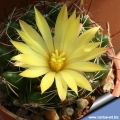
by Cactus Art
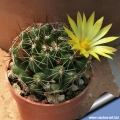
by Cactus Art





















